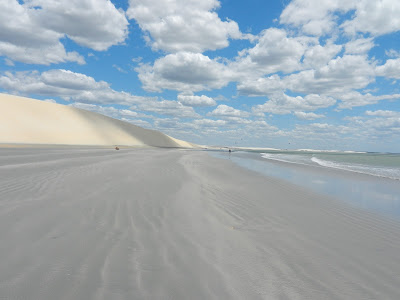
Below is a highly subjective list which attempts to categorise and single out some of our favourite places encountered during our year on the road in South America.
NATURE AND LANDSCAPES: Bolivia with its towering mountains and its vast slice of Amazonian rain forest offered the most impressive and diverse scenery of any country.
Parque National Madidi in the midst of thick jungle, and the nearby
Pampas with its wealth of animals on display offered a unique experience. In complete contrast, hiking the vast and remote plains high in the Andes surrounding
Sucre gave us a glimpse of traditional Quechua lifestyle.
LA FIESTA: Buenos Aires operates on a different schedule, eat supper after 22:00, go out at 2:00 and come home at 7:00 when the sun is up and the bakery has fresh pastries ready. This place was made for long and memorable nights out. With many diverse neighbourhoods to choose from and each having its distinct flavour, there are countless opportunities to go out and enjoy the cities vibrant cosmopolitan nightlife. Just make sure to bring plenty of cash because these nights will most likely not be cheap.
LEARNING SPANISH: Friendly
Colombia, a country where its remarkably easy to meet locals and to take part in conversations, is by far the most recommended place to learn the language. With relatively few English speakers around in many parts of the country, you're constantly in contact with the Spanish language and given plenty of opportunities to practice. Plus, the beautiful accents of Medellin, Cali and Bogota will facilitate the learning process. Once mastered, speaking the local language will invariably contribute to a much richer travel experience.
BEACHES: The Northeast coast of Brazil features endless soft sand beaches, warm waters, and peaceful beach towns that quickly draw you in.
Jericoacoara with its many windsurfers, high sand dunes and a mellow hippy vibe, tops the list. Further south
Praia de Pipa with its diverse shops and restaurants, tropical fauna and friendly wild dolphins swimming near shore is a natural paradise. Add to the mix local Brazilians, arguably the most friendly and energetic people on the planet, and you won't want to leave. We visited these places in the very beginning of our travels and they proved very difficult to escape.
FOOD AND CUISINE: Chile, with its heaps of fresh seafood and some of the tastiest natural ingredients, impresses with its cuisine. Unlike the fried food meccas of neighbouring countries or the heavy, all meat Argentinian diet, Chilenos have really learned to incorporate diversity in their diet and to take advantage of their numerous locally produced foods. Pulmay, caldillo, chupe de pescado, ceviche, sushi and even the completos (hotdogs with mayo and a heap of avocado) are all exceptionally delicious. Add great wines at affordable prices such as Sauvignon Blanc and Carmenere and you end up with unbelievable feast.
SURFING: Although we're completely awful at the sport, we nevertheless developed an interest in being amongst the waves. For beginners,
Mancora in northern Peru is fun with slow but powerful waves requiring little effort to ride. Just beware of the rocks and coral beneath. In Ecuador,
Montanita has a fun beach break that features a section where the waves are smaller and less powerful. For us,
Canoa in Ecuador is the perfect beach town, easily accessible, has adequate waves for beginners, is not overrun by tourism and has all the infrastructure to offer choice and diversity of restaurants, bars and accommodation which favors affordability.
